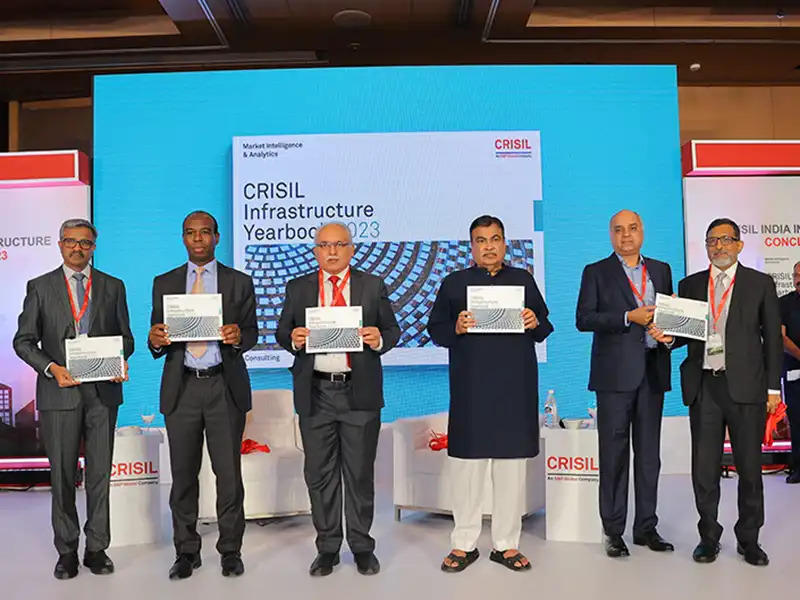India is gearing up for a substantial infrastructure spending spree, with a plan to invest nearly ₹143 lakh crore between fiscal years 2024 and 2030. This represents more than double the ₹67 lakh crore spent on infrastructure over the past seven financial years starting from 2017. The rating agency CRISIL shared this information in its Infrastructure Yearbook 2023, underlining the significance of this ambitious undertaking.
Green Investments on the Rise
A notable aspect of this investment is that ₹36.6 lakh crore will be allocated to green projects. This marks a fivefold increase compared to the amount spent on sustainability-focused initiatives between fiscal years 2017 and 2023. The emphasis on green investments reflects India’s commitment to environmental sustainability.
Economic Growth and Income Projections
CRISIL Ltd.’s Managing Director and CEO, Amish Mehta, expects India’s gross domestic product (GDP) to grow at an average rate of 6.7% through fiscal year 2031, positioning India as the fastest-expanding large economy. He predicts a significant increase in per capita income, rising from $2,500 to $4,500 by fiscal year 2031, effectively transitioning India into a middle-income country. This growth trajectory will be driven by extensive infrastructure development with a strong focus on sustainability.
Sectors Poised for Growth
While releasing the ‘CRISIL Infrastructure Yearbook 2023,’ Mehta highlighted several sectors that are key to this growth:
-
Infrastructure Sectors with High Scores: Four sectors, namely roads and highways, power transmission, renewable energy, and ports, have earned an overall score of 7 or higher out of 10. This demonstrates the pace of reforms and developments in these areas over the past few years.
- Mega-Scale Projects: The next phase of infrastructure development will see an increase in the average project size and a substantial number of mega-scale projects. This reflects the nation’s ambition to undertake large and transformative initiatives.
- Policy and Regulatory Support: Mehta emphasized the importance of consistent policy and regulatory support to create an attractive environment for stakeholders to accelerate investments across infrastructure sectors.
-
Emerging Sectors: Prominent sectors such as roads and power are expected to remain major contributors to the infrastructure expansion. Meanwhile, relatively nascent areas such as electric vehicles (EVs), solar, wind, and hydrogen are poised for significant growth.
Electric Vehicle Revolution
CRISIL predicts a substantial shift towards electric vehicles, with the share of EVs in India’s overall automobile sales projected to reach 30% by 2030. Two-wheeler EV sales are expected to outpace other segments up to 2028, while demand for EV buses will be driven by state transport undertakings. Factors such as favorable total cost of ownership and total cost of acquisition, along with increased model availability for two- and three-wheelers, are expected to support EV adoption in the coming years.
Renewable Energy Surge
CRISIL also anticipates a significant expansion of renewable energy capacity, estimated to grow fourfold between fiscal years 2023 and 2030. Solar energy will account for half of the incremental non-fossil generation. To further enhance sustainability, the adoption of emerging technologies like ‘floatovoltaics’ (floating solar), offshore wind technology, and green hydrogen will be pivotal.
Green Hydrogen Potential
The hydrogen sector is set to attract substantial investments, estimated at ₹1.5 lakh crore between fiscal years 2024 and 2030. Mandates for green hydrogen use and incentive schemes will play a crucial role here, as the production cost of green hydrogen is double that of fossil-based hydrogen.
Sovereign Green Bond Issuance
India’s plan to issue its first sovereign green bond will pave the way for the development of the domestic bond market for green projects. In recent years, there has been a growing global appetite for green assets among investors, leading Indian companies to seek funding in global markets. This move aligns with India’s commitment to green financing and sustainability.



 ODI World Cup winners full list (1975-20...
ODI World Cup winners full list (1975-20...
 Top-10 Silk Producing States in India 20...
Top-10 Silk Producing States in India 20...
 World Tuna Day 2024 Observed Annually on...
World Tuna Day 2024 Observed Annually on...
